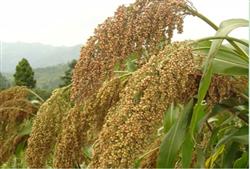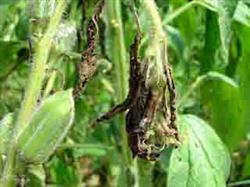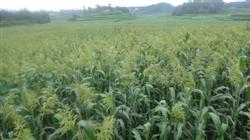How to plant pearl sorghum for high yield

How can pearl sorghum be planted with high yield? Please guide pearl sorghum to be planted with reference to the following methods: 1. Soil preparation: one plough and one rake for ripe land, two ploughs and two rakes for wasteland (raw land), rake the soil into pieces during the day to meet the requirements of growing corn, paddy fields or plots with too much water should not be planted. 2. Apply sufficient base fertilizer: apply 20 kg compound fertilizer every 667m2 on the ground and cover it with soil; where possible, apply 2000 kg organic fertilizer. 3. Sowing: the seeds can be sowed when the temperature is stable at 15 degrees. In Guangxi, the seeds can be sowed from February 15 to August 20, with 6000 to 7000 holes per 667 square meters, with a dwarf spacing of 20 × 50 centimeters, 3 seeds per hole and 750 grams of seeds per 667 square meters. Soak the seeds in warm water for 10 hours before sowing so that the seedlings can emerge neatly. The sowing depth is 2cm to 3cm. If the cover soil is too deep, the emergence time will be prolonged, which will affect the harvest of the management people. 4. Field management: prevent drought before emergence. When the seedling grows to a leaf, the seedling is fixed, leaving a strong seedling in each hole, ensuring that there are 6000 to 7000 seedlings per 667 square meters. After fixing the seedlings, 8 kg ~ 10 kg of urea was applied to topdressing every 667 square meters, and the soil was cultivated at the same time. 5. Pest control: the main diseases of pearl sorghum are sorghum bacterial stripe disease and sorghum penicilliosis. Sorghum bacterial stripe disease occurs at seedling stage and penicilliosis occurs at heading stage, which can be controlled by spraying carbendazim or Dysen zinc. The main pests are aphids, Spodoptera litura, borers, beetles, aphids and beetles at seedling stage, and damage to Spodoptera litura and borer at heading stage and wax ripening stage, which can be sprayed with Shachongshuang and Kuailing. Sorghum is very sensitive to organophosphorus pesticides and cannot be used. During the growth period, it is also very sensitive to pesticides such as trichlorfon, dichlorvos, fenitrothion and dimethoate, and is sensitive to pesticides such as phosphorus amine, phoxim and methamidophos, and can not be used. Should be according to the law of the occurrence of diseases and insect pests, strictly according to the proportion of pesticide instructions, correct grasp, appropriate application, active prevention and control. 6. Harvest: when planted in Guangxi, the growing period can reach 95 to 120 days, and the tight panicle type can be harvested earlier than the loose panicle type. Harvest in sunny days should be selected for drying and storage. 7. Regenerative cultivation: regenerative cultivation can be carried out where there is a long frost-free period and much accumulated temperature. The axillary buds of pearl sorghum have strong germination ability. after harvesting or pinching ears, the dormant axillary buds at the base of the stem will germinate quickly, grow new plants, and can develop under suitable conditions, heading and maturing, and then harvest one or two seasons. The output can reach 300 kilograms per 667 square meters. The pearl sorghum which needs stubble regeneration needs to be fertilized with 10 kg of compound fertilizer 15 days before ripening, and should be harvested in time after ripening. Cutting stalks after harvest should not leave stubble too high, so as not to consume nutrition and leave 2 or 3 axillary buds exposed to the ground. Leave 2 or 3 strong buds after budding. Attention should be paid to increasing soil and topdressing of recycled sorghum. Apply 10 kg compound fertilizer every 667 square meters. 8. Seed retention method: semi-tight panicle type should be selected for seed retention, while tight panicle type and loose panicle type should not be selected. Because the grain of tight panicle type is easy to mildew and rot, and the yield of loose panicle type is not high. Click to get more sorghum planting technology click to get more grain planting technology
- Prev

How to control white sesame bacterial wilt?
How to control white sesame bacterial wilt? Please guide white sesame bacterial wilt is very common, its yield and quality have a serious impact, its disease characteristics and control techniques are as follows: 1, the disease conditions white sesame bacterial wilt, mainly caused by excessive soil moisture, the pathogen with the diseased plant residue in the soil...
- Next

When is the best time for sorghum topdressing?
When is the best time for sorghum topdressing? Please give suggestions for sorghum: in order to meet the nutrient needs of sorghum from jointing to heading, the first fertilizer should be applied at jointing stage, 150 kg of ammonium nitrate per hectare or 120 kg of urea per hectare, and the second fertilizer should be applied at the flag stage of booting. 120 ammonium nitrate per hectare.
Related
- The first cup of black tea in spring, the flavor and history of tea gardens in Kenya, Africa
- The computer can not only choose potatoes, but also grow tea rice. AI will grow winter oolong tea champion.
- It is not only the inflated tea bitten by insects, but also engraved with the four seasons tea in Beipu.
- The Oriental Beauty Tea Festival in Zhuxian County takes the stage at the weekend to experience the plus-size feast of oil tea.
- & quot; Oriental Beauty Tea & Exploration of Emei in Hsinchu, the hometown of quot;
- The new variety of strawberry "Tainong 1" dessert is the first choice with mellow aroma. Crimson gorgeous
- History of Tea in Taiwan: from Wild Inner Mountain to Export Tea Garden
- Two types of Taiwan Oriental Beauty Black Tea won the British three-Star Award for Childhood Tea Xiang Zhang Jiaqi changed from pilot to champion tea maker.
- Banana species and varieties: the planting history of Taiwan Xianren banana and dwarf banana is long, is banana disease resistant?
- Coffee planting Technology: Qianjie Coffee from Seedling to harvesting

